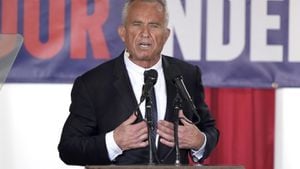Each year, more than 1 billion birds die across the United States as they collide with buildings. This staggering statistic highlights not only the vulnerability of our avian friends, but also the pressing need for enhanced protection measures. Recently, several news articles have brought this issue to the forefront, including the tragic tale of Flaco, the Eurasian eagle-owl, who made waves when he escaped from the Central Park Zoo, only to meet his end due to colliding with a high-rise building.
Understanding the deadly allure of urban environments for birds begins with their migratory patterns. Migratory birds often traverse vast distances, relying heavily on celestial navigation during nocturnal flights. Unfortunately, bright city lights can be disorienting, luring birds off course and leading them toward treacherous glass facades. This draws attention to how confusing reflections can resemble natural habitats, leading birds to perceive windows as open air.
Research suggests buildings with large glass surfaces are particularly hazardous. For example, low-rise structures, not the towering skyscrapers one might expect, account for the majority of bird collisions. Studies have shown around 365 million to as many as 1 billion birds meet such fates every year, with half of those encounters leading to their demise from injury. The rehabilitation success rate for treated birds stands at about 40%, as many succumb to their injuries or require euthanasia.
Flaco's story exemplifies the hazards wildlife face in urban settings. Rescued shortly after his escape from the zoo, he roamed freely for nearly a year before suffering severe injuries likely due to hitting a building. His experience has led to public memorials and heightened awareness of the risks posed by window strikes.
Organizations like the American Bird Conservancy and the National Audubon Society have been vocal advocates for bird-friendly practices. “This is one conservation issue where we know exactly how to fix it,” remarked Christine Sheppard, director of the glass collision program. Concrete measures like installing bird-safe glass or implementing nighttime lighting restrictions during migration seasons can dramatically reduce bird fatalities.
Recent legislative efforts aim to mitigate the threat buildings pose to birds. San Francisco first enacted legislation to curb building collisions back in 2011, setting the stage for similar initiatives across the United States. New York City passed comprehensive legislation requiring builders to incorporate bird-friendly materials and mandatorily turning off non-essential outdoor lights during peak migration months.
Practical steps for homeowners also exist. By adding stickers or tape to windows—particularly those near bird feeders—residents can create visual cues for birds approaching these dangers. This proactive approach not only protects wildlife but also cultivates awareness among community members about the interconnectedness of urban living and ecological safety. "If you like birds enough to want to put food out for them, you should make the glass you’re looking through safe for them," urged Sheppard.
The pressing question remains: what more can be done? Citizen initiatives like reporting bird collisions to databases such as dbird.org can help researchers track collision hotspots, ensuring future preventive measures are effectively targeted. Educators, local governments, and conservationists could team up to establish programs focused on community awareness and action.
Despite the challenges presented by urban environments, there is hope. The public's increased awareness of the dangers posed by buildings to migratory birds can pave the way for significant changes. Flaco's tragic death serves as both a wakeup call to cities around the country and as inspiration for collective action, potentially sparking meaningful conversations around improving our built environment for the sake of avian health.
Legislation alone is not enough; active community engagement and personal responsibility play critical roles. Individuals interested in making changes can also lobby local officials to support more bird-friendly legislation. They can aim to initiate dialogues about education and collaboration with local businesses, organizations, and conservationists to drive this change forward. With thoughtful strategies and cooperative efforts, the number of birds lost to these tragedies can be dramatically reduced, allowing our feathered friends to thrive even amid the glass and steel of our cities.
Birds offer invaluable contributions to ecosystems, including pest control and pollination, making their protection beneficial not only for the birds themselves but for humanity as well. There’s no time to waste. The growing urgency surrounding bird strikes requires swift action from all of us to safeguard these beautiful creatures.



